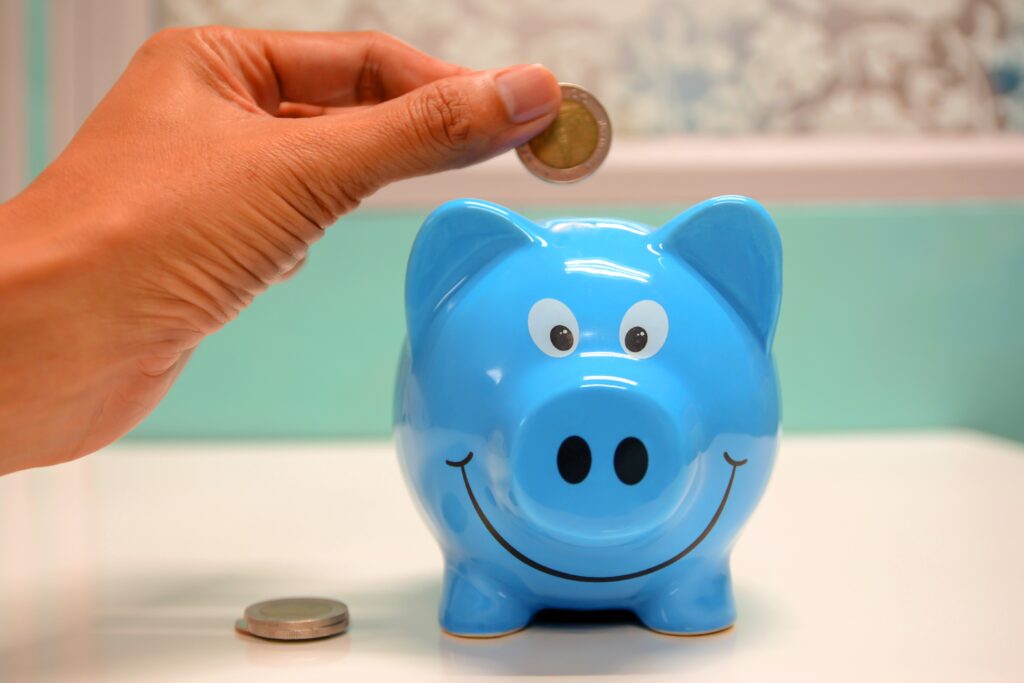If you are looking to get yourself on the property ladder as many other people are, or perhaps you just want to put some money aside, we have you covered.
- Open a high interest current account/savings account
- Switch to a more affordable energy provider
- Turn thermostat to between 18°C and 21°C
- Draught proof windows & doors
- Measure your finances, track your annual income
- Remove unnecessary subscriptions
- Pay off any high interest debt
- Repair if possible, before replacing items
- Avoid brand loyalty: convenience, efficiency and perceived value?
- Auto-save; standing order to saving account each month/week.
- Buy once, cry once. The higher initial cost of a better quality item can be better in the long term, rather than replacing a cheaper item on multiple occasions
- Reduce your bills, not just household bills, but car insurance and mobile phone
- Define your lifestyle, you don’t need to constantly be saving and can still enjoy life.
High interest bank account
Your money goes in each month, so you may as well earn a return on it and there are some good current account options out there, you can easily compare these on sites like money supermarket and confused.
Switch energy provider
We’ve covered this extensively in the past, with many energy providers increasing their tariffs it’s always worth comparing the deals available. You can also use comparison sites to find a better deal.
Reducing your thermostat to 18°C
It’s comfortable for most adults to live between 18°C-21°C, especially as we enter the summer months.
Draught proofing doors and windows
This can help keep prevent heat loss in the winter and maintain a cool temperature in the summer months. Other cost saving tips include;
- Switch off standby
- Draught proof windows and doors
- Turn off lights
- Wash at 30 degrees
- Avoid using a tumble dryer
- Swap a bath for a shower
- Do not overfill the kettle
- Reduce dishwasher use by using when full
- Insulate you hot water cylinder
Measure your finances, track your annual income
This will also let you identify not only weekly and monthly expenses, but also any large one off purchases, such as car and home insurance which are often large expenses.
- Compare services/products for value
- Do you need it?
- Can you live with less of it/are you making use of it to the full and avoid waste?
Remove unnecessary subscriptions
Things like Netflix, Prime, Spotify and even that gym membership you rarely use. Cancelling these subscriptions can add up.
Pay off any high interest debt
If you have high interest debt, you’re best paying it off before saving, as often banks charge you more for loans than they pay you in interest. Paying back loans with 5% or more interest, against earning interest at 2%.
Repair if possible, before replacing items
Sometimes repair can be more efficient than replacing items, such as a mobile phone that could still be functional fixing any issues could save money over the purchase of a new device, you could also look at SIM only deals at the end of the contract.
Avoid brand loyalty: convenience, efficiency and perceived value?
Brand loyalty can be detrimental, you can often find other products from food and clothing to electronics and energy suppliers from other companies at less cost with the same functionality. Of course if you need a specific feature of a brand that cost more, can you still justify the cost?
Auto-save; standing order to saving account each month/week
Saving can be difficult, you can set up a standing order when you get paid to put away a set amount each pay day. This helps you save money each month without fail.
Buy once, cry once. The higher initial cost of a better quality item can be better in the long term, rather than replacing a cheaper item on multiple occasions
Purchasing a high quality item that has a longer warranty could prove beneficial especially over cheaper items that often break and need regular repair or replacement.



